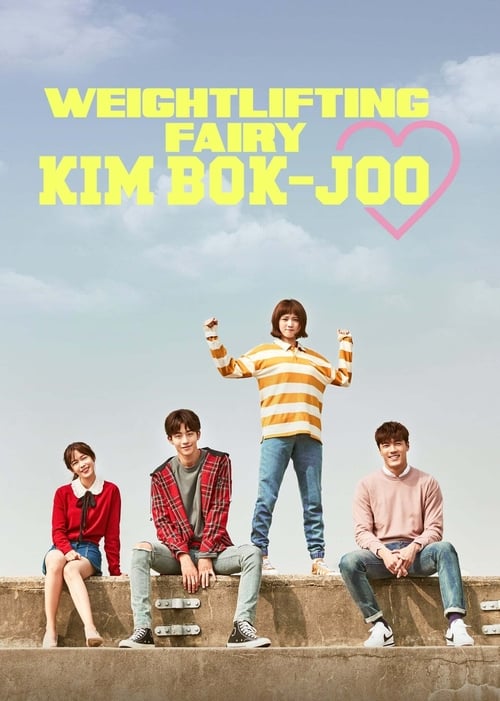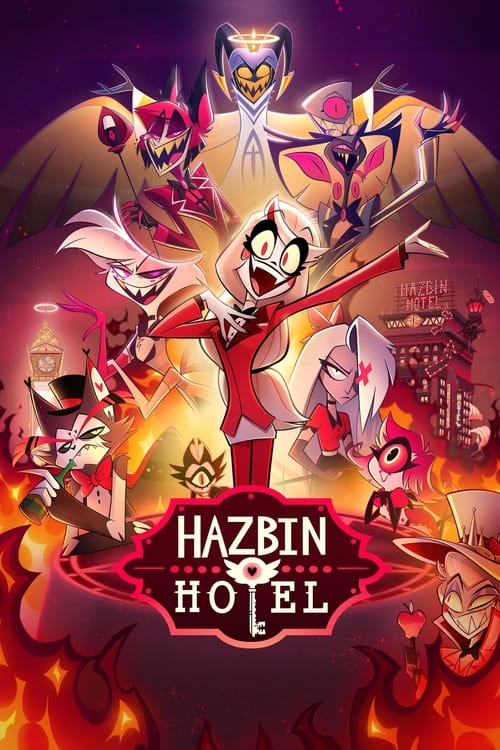
Ask Your Own Question
What is the plot?
In the opening scene of "Episode 21," the camera pans over a dimly lit hospital room where the protagonist, Dr. Miguel, is anxiously pacing back and forth. He is waiting for news about his sister, who is undergoing a critical liver transplant. The tension in the air is palpable as he reflects on their childhood memories, filled with laughter and warmth, contrasting sharply with the current dire situation. His internal struggle is evident; he feels helpless and desperate, knowing that time is running out.
As the scene shifts, we see the surgical team preparing for the transplant. The lead surgeon, Dr. Elena, is shown meticulously reviewing the patient's chart, her face a mask of concentration. She exchanges a few words with her assistant, highlighting the urgency of the operation. The camera zooms in on the clock, emphasizing the dwindling minutes before the procedure begins. Dr. Elena's determination is clear; she is committed to saving the life of Miguel's sister, but the stakes are high.
Meanwhile, Miguel receives a phone call from his estranged father, who expresses regret over their fractured relationship. This unexpected conversation stirs a mix of emotions within Miguel, who grapples with feelings of anger and longing for reconciliation. He ultimately decides to put aside their differences for the moment, focusing instead on his sister's well-being. This decision marks a turning point for Miguel, as he resolves to be there for his family despite past grievances.
The scene transitions back to the operating room, where the surgery is underway. Dr. Elena and her team work with precision, their movements synchronized as they navigate the complexities of the transplant. The tension escalates as they encounter unexpected complications, leading to a frantic atmosphere. Dr. Elena remains calm under pressure, issuing commands to her team while internally battling her own fears of failure. The stakes are raised as the clock ticks down, and the audience can feel the weight of each passing second.
In a parallel storyline, Miguel's father arrives at the hospital, seeking to reconnect with his son. He finds Miguel in the waiting area, visibly distressed. Their conversation is fraught with tension, as Miguel struggles to forgive his father for past mistakes. However, the urgency of the situation forces them to confront their issues head-on. Miguel's father offers support, and for the first time, Miguel begins to see a glimmer of hope for their relationship.
Back in the operating room, the surgical team faces a critical moment when they realize that the liver is not functioning as expected. Dr. Elena makes a bold decision to try an experimental procedure that could save the patient but carries significant risks. She explains her reasoning to the team, emphasizing the importance of taking calculated risks in life-and-death situations. The team rallies behind her, showcasing their trust in her leadership.
As the surgery progresses, the tension reaches its peak when the patient's vitals begin to drop. Dr. Elena and her team work frantically to stabilize the situation, employing every technique they have learned. The camera captures the sweat on their brows and the intensity in their eyes, highlighting the emotional weight of the moment. Miguel, waiting outside, is oblivious to the chaos inside but feels a deep sense of dread as he clutches a family photo.
In a climactic moment, the surgery takes a turn for the better as Dr. Elena's experimental procedure begins to show signs of success. The patient's vitals stabilize, and the team breathes a collective sigh of relief. Miguel, sensing a shift in the atmosphere, feels a surge of hope. He reflects on the importance of family and the bonds that tie them together, reinforcing his commitment to support his sister and mend his relationship with his father.
The episode concludes with Miguel receiving the news that the surgery was successful. He rushes into the recovery room, where he finds his sister waking up, groggy but alive. The emotional reunion is filled with tears of joy and relief. Miguel's father watches from a distance, a proud yet humbled expression on his face, as he realizes the importance of family ties. The camera pulls back, capturing the moment of unity and hope, leaving the audience with a sense of closure and anticipation for what lies ahead.
Related Titles
Browse All Titles →What is the ending?
In the ending of "Liver or Die," Season 1, Episode 21, the main characters face the consequences of their choices. The episode culminates in a tense confrontation that leads to a significant revelation about loyalty and sacrifice. The fates of the characters are sealed as they grapple with their past decisions, ultimately leading to a bittersweet resolution.
As the episode unfolds, the tension builds in a dimly lit warehouse where the main characters gather for a final showdown. The air is thick with anticipation and unspoken words. The protagonist, whose internal struggle has been a focal point throughout the season, stands at the center, grappling with the weight of betrayal and the desire for redemption.
Scene 1: The warehouse is eerily quiet, save for the distant sound of dripping water. Shadows dance across the walls as the characters enter one by one, each carrying their own burdens. The protagonist, visibly shaken, scans the room, searching for answers and closure. Their heart races, reflecting the turmoil within.
Scene 2: Tension escalates as accusations fly. The antagonist, a figure shrouded in deceit, confronts the protagonist, revealing hidden truths that shake the foundation of their relationship. The protagonist's face contorts with a mix of anger and sorrow, realizing the depth of the betrayal. The emotional stakes are high, and the audience can feel the weight of every word exchanged.
Scene 3: As the confrontation reaches its peak, a physical altercation breaks out. The characters grapple not only with each other but with their own demons. The protagonist fights not just for survival but for the chance to reclaim their sense of self. Each punch thrown is a release of pent-up frustration and pain, a cathartic moment that echoes the struggles faced throughout the season.
Scene 4: In the chaos, a pivotal moment occurs when a character makes a selfless choice, sacrificing their own safety for the sake of another. This act of bravery shifts the dynamics of the confrontation, forcing everyone to reevaluate their loyalties. The protagonist watches in disbelief, their heart swelling with a mix of admiration and guilt.
Scene 5: As the dust settles, the characters are left to confront the aftermath of their actions. The warehouse, once a battleground, now feels like a tomb of lost dreams and shattered trust. The protagonist, now more resolute, vows to make amends and seek a path toward healing. Their journey is far from over, but there is a glimmer of hope in their eyes.
Scene 6: The episode closes with the characters parting ways, each carrying the weight of their choices. The protagonist walks away, a sense of determination in their stride, while the others are left to ponder their fates. The screen fades to black, leaving the audience with lingering questions about redemption, loyalty, and the cost of survival.
In this final episode, the characters' fates are intertwined with their choices, highlighting the complexities of human relationships and the struggle for redemption. The protagonist emerges with a renewed sense of purpose, while others face the consequences of their actions, setting the stage for potential growth and transformation in future narratives.
Is there a post-credit scene?
In "Episode 21" of "Liver or Die," there is indeed a post-credit scene that adds an intriguing layer to the narrative. As the credits roll, the screen fades to black before transitioning to a dimly lit room. The atmosphere is tense, filled with an air of uncertainty.
In this scene, we see the character of Miguel, who has been grappling with his moral dilemmas throughout the season. He is sitting at a table, his hands clasped tightly, revealing his inner turmoil. The camera zooms in on his face, capturing the flicker of doubt in his eyes.
Suddenly, the door creaks open, and a shadowy figure enters. The lighting casts an ominous glow, obscuring the figure's identity. Miguel's expression shifts from contemplation to alarm, hinting at a past connection or unresolved conflict. The figure steps into the light, revealing it to be someone from Miguel's past, a character who has been mentioned but never seen before.
Their conversation is cryptic, filled with veiled threats and unspoken history, leaving viewers on edge. The scene ends with Miguel's determined expression, suggesting that he is ready to confront whatever challenges lie ahead, setting the stage for potential conflicts in future episodes. This post-credit moment effectively teases the audience, leaving them eager for more revelations in the unfolding story.
What challenges does the main character face in Episode 21?
In Episode 21, the main character, who is grappling with the consequences of their past decisions, faces significant challenges as they navigate a critical health crisis. The emotional weight of their situation is compounded by strained relationships with family members who are struggling to cope with the impending loss.
How does the relationship between the protagonist and their sibling evolve in this episode?
Throughout Episode 21, the relationship between the protagonist and their sibling is put to the test. Tensions rise as they confront unresolved issues from their childhood, leading to heated arguments that reveal deep-seated fears and regrets. However, moments of vulnerability allow them to reconnect, showcasing their bond amidst the turmoil.
What pivotal decision does the protagonist make regarding their treatment?
In this episode, the protagonist faces a pivotal decision about whether to pursue an aggressive treatment plan that could prolong their life but comes with severe side effects. This decision is fraught with emotional turmoil, as they weigh the potential for recovery against the impact on their quality of life and the feelings of their loved ones.
How do secondary characters react to the protagonist's health crisis?
Secondary characters in Episode 21 react with a mix of denial, anger, and support to the protagonist's health crisis. Some friends attempt to provide comfort, while others struggle to accept the reality of the situation, leading to conflicts that highlight their differing coping mechanisms.
What flashbacks are featured in this episode, and how do they impact the storyline?
Episode 21 features poignant flashbacks that delve into the protagonist's childhood, revealing formative experiences that shaped their current relationships and health choices. These flashbacks serve to deepen the audience's understanding of the protagonist's motivations and the emotional stakes involved in their current battle.
Is this family friendly?
In "Liver or Die," Season 1, Episode 21, there are several elements that may be considered objectionable or upsetting for children or sensitive viewers.
-
Medical Themes: The episode deals with serious health issues, including discussions about liver disease and organ transplants, which may be distressing for younger audiences or those sensitive to medical topics.
-
Emotional Turmoil: Characters experience intense emotional struggles, including fear, anxiety, and grief related to health crises, which could be overwhelming for some viewers.
-
Family Conflict: There are scenes of familial tension and conflict that may be difficult for children to process, as they depict the strain that health issues can place on relationships.
-
Dramatic Tension: The episode contains moments of high drama and suspense that may evoke strong emotional reactions, potentially causing discomfort for sensitive viewers.
-
Realistic Portrayals of Illness: The depiction of illness and its impact on daily life is portrayed realistically, which might be upsetting for those who have experienced similar situations.
These elements contribute to a narrative that, while compelling, may not be suitable for all audiences, particularly younger children or those who are sensitive to such themes.

































